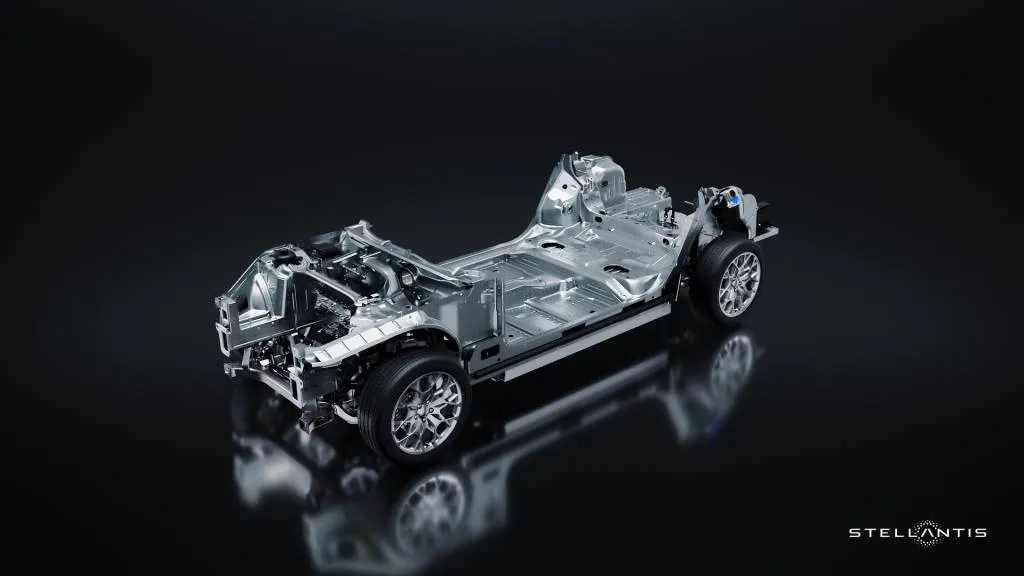Stellantis final week detailed its STLA Massive platform, which the automaker claims can home powertrains able to hurling an EV from 0-60 mph in 2.0 seconds.
That breathtaking acceleration determine could also be one thing Stellantis CEO Carlos Tavares now claims is a security characteristic.
That is as a result of fast acceleration permits for faster overtaking, Tavares instructed Prime Gear and different media, utilizing the necessity to overtake a slow-moving truck on a two-lane street for instance.

STLA Massive platform
“The extra acceleration you’ve, the safer the circumstances beneath which you overtake could be,” Tavares mentioned, “and from that perspective the BEV know-how is nice as everyone knows.” The thought appears to be {that a} 2.0-second acceleration time is inherently safer than the still-quick acceleration occasions of different EVs.
In Stellantis’ case, nevertheless, efficiency will seemingly come at the price of effectivity. The automaker has described the STLA Massive platform as supporting 500 miles of vary from 118-kwh battery packs in environment friendly sedans, or 2.0-second acceleration in efficiency vehicles just like the Dodge electrical muscle automotive tipped to make use of the platform. It is an both/or proposition.
Typically, the faster you make an EV, the extra rigorous its battery cooling and bigger different elements have to be—so that you lose effectivity. Porsche engineers instructed Inexperienced Automobile Stories at one level that had they engineered the 800-volt Taycan for vary above efficiency, they may have achieved a a lot larger vary.
The Kia EV6 GT, as an example, is just rated at 206 miles, whereas in different slower-accelerating variations it is rated as much as 310 miles. And the Lucid Air Sapphire cannot match the Air Grand Touring mannequin’s 516 miles of vary, regardless of related battery capability.

Dodge Charger Daytona Idea
As for Tavares’ declare that acceleration boosts security, what he is arguing could also be a fringe case and really depending on driver restraint.Because the Insurance coverage Institute for Freeway Security (IIHS) argued in 2021, even slight will increase within the velocity of crashes can have dire penalties on human final result. Within the phrases of physics, acceleration could enable dodging some crashes, however it makes the terminal velocity a lot larger for others. It additionally amplifies the issues concerning the risks of heavy EVs to different motorists.
It is necessary to notice that in a 2020 evaluation, the associated Freeway Loss Knowledge Institute (HLDI) discovered that the crash price and financial losses for EV was truly decrease versus standard autos—a head-scratching distinction versus what insurers and a few corporations together with Hertz have continued to argue. Though a few of these EVs may need larger horsepower and stronger acceleration, at the least early on real-world outcomes did not associate with the HLDI’s personal longtime steering that, for youthful drivers particularly, sports activities vehicles and higher-horsepower autos, together with smaller autos, had larger crash charges.
Briefly, keep tuned for extra information. Particularly as extra non-Tesla EVs hit the street in bigger numbers, we’ll see if higher-power, quicker-accelerating EVs are in quick safer, or whether or not they appeal to a few of the similar risk-prone drivers as these sports activities vehicles did prior to now.
—
with reporting by Bengt Halvorson
Supply
https://www.greencarreports.com/information/1142137_stellantis-ceo-claims-quicker-ev-acceleration-is-a-safety-feature



